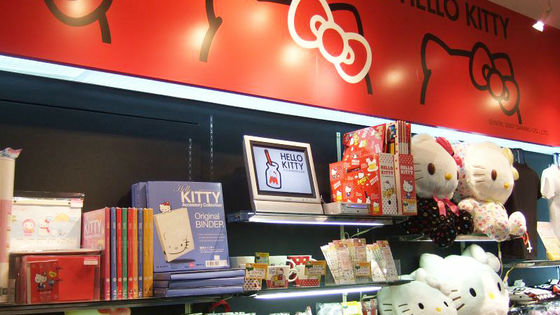Why was Hello Kitty successful? Marketing professor explains the success story

Theory and strategies of anthropomorphic brand characters from Peter Rabbit, Mickey Mouse, and Ronald McDonald, to Hello Kitty
https://www.researchgate.net/publication/263730797_Theory_and_strategies_of_anthropomorphic_brand_characters_from_Peter_Rabbit_Mickey_Mouse_and_Ronald_McDonald_to_Hello_Kitty
Hello Kitty at 50: a Japanese success story of simplicity and cuteness
https://theconversation.com/hello-kitty-at-50-a-japanese-success-story-of-simplicity-and-cuteness-238809

Hello Kitty (Kitty White) was developed as a character in 1974, and the first goods were released in March 1975. Hello Kitty became explosively popular from the first goods, and has continued to be popular for 50 years since then. Hello Kitty is popular not only in Japan but also worldwide, and the 50th anniversary was celebrated in Singapore and the United States. In June 2024, King Charles of the United Kingdom sent a speech at a banquet saying, 'Let me tell you about a person who turns 50 this year. She grew up with her twin sisters in the suburbs of London, is a self-made entrepreneur with billions of dollars in assets, and has also served as a UNICEF children's ambassador. Therefore, I can only
Hosani points out that one of the reasons Hello Kitty has been so beloved for so long is 'largely due to her inherent simplicity.' Designed by Yuko Shimizu in 1974, her appearance, consisting of a black dot, yellow nose, whiskers and ribbon, has remained almost unchanged in 50 years. In addition to being iconic and cheap to replicate, Hosani says she is also a prime example of the Japanese 'kawaii' aesthetic.
Hosani said that the reason why characters such as Hello Kitty and Mickey Mouse are popular among children and adults alike is because of the deep-rooted enthusiasm for ' anthropomorphization ,' which gives animals and other things human characteristics. On the other hand, sociologist Simon Gottschalk argued that the expansion of the character business has a negative side, saying, 'The fact that characters that are attractive to children as round and reassuring are also in demand among adults shows that our daily interaction with computer technology is accelerating the 'infantilization of culture.''

By
According to Hosani, the reason for Hello Kitty's long-lasting success is not only the excellent design of the character, but also Sanrio 's clever marketing strategy. One of the most famous aspects of Hello Kitty's marketing is collaborations with other companies and content.
Hello Kitty's first collaboration was with an electronics retail chain in 1996, 21 years after her birth. Three years later, she collaborated with McDonald's to release a Hello Kitty set, which sparked a fad, and when similar collaborations were carried out in Taiwan and Singapore in 2000, it was reported that they caused a commotion with long lines and even injuries. Since then, Hello Kitty collaborations have been expanded to a wide range of items, including stationery and electronics, collaboration products with major brands such as Nike and Adidas, and Fender Stratocasters .
In the paper ' Theories and Strategies of Anthropomorphic Brand Characters: From Peter Rabbit, Mickey Mouse, Ronald McDonald's to Hello Kitty, ' which Hosani is the lead author of, he lays out the theory of how to build and sustain an anthropomorphic character brand. According to the paper, the eight tactics that are important for building and sustaining the Hello Kitty brand are 'simplicity of design,' 'character licensing,' 'collaboration with third parties,' 'utilizing the emotion of 'nostalgia,'' 'product line extension,' 'brand extension,' 'maintaining consumer interest,' and 'utilizing technology.'
The tactics are used in combination, such as collaborations with other companies and content, licensing agreements, and a multiplexing strategy by expanding various product lines, as well as collaborations with celebrities to increase brand awareness, creating a 'seamless cycle' for the brand. The paper analyzes that this cycle continues to maintain consumer interest and induces nostalgic feelings of 'I liked it when I was a child,' resulting in a successful long-term strategy that is loved by children and adults alike.

By Marceline Smith
However, it should be noted that Hosani et al.'s paper only analyzed a single case study, and there are limitations to viewing it as a standardized means of brand strategy. Hosani says that future research should use more quantitative methods to investigate the appeal of Hello Kitty's design, as well as marketing-related consumer attitudes and attachment.
Related Posts:
in Note, Posted by log1e_dh







